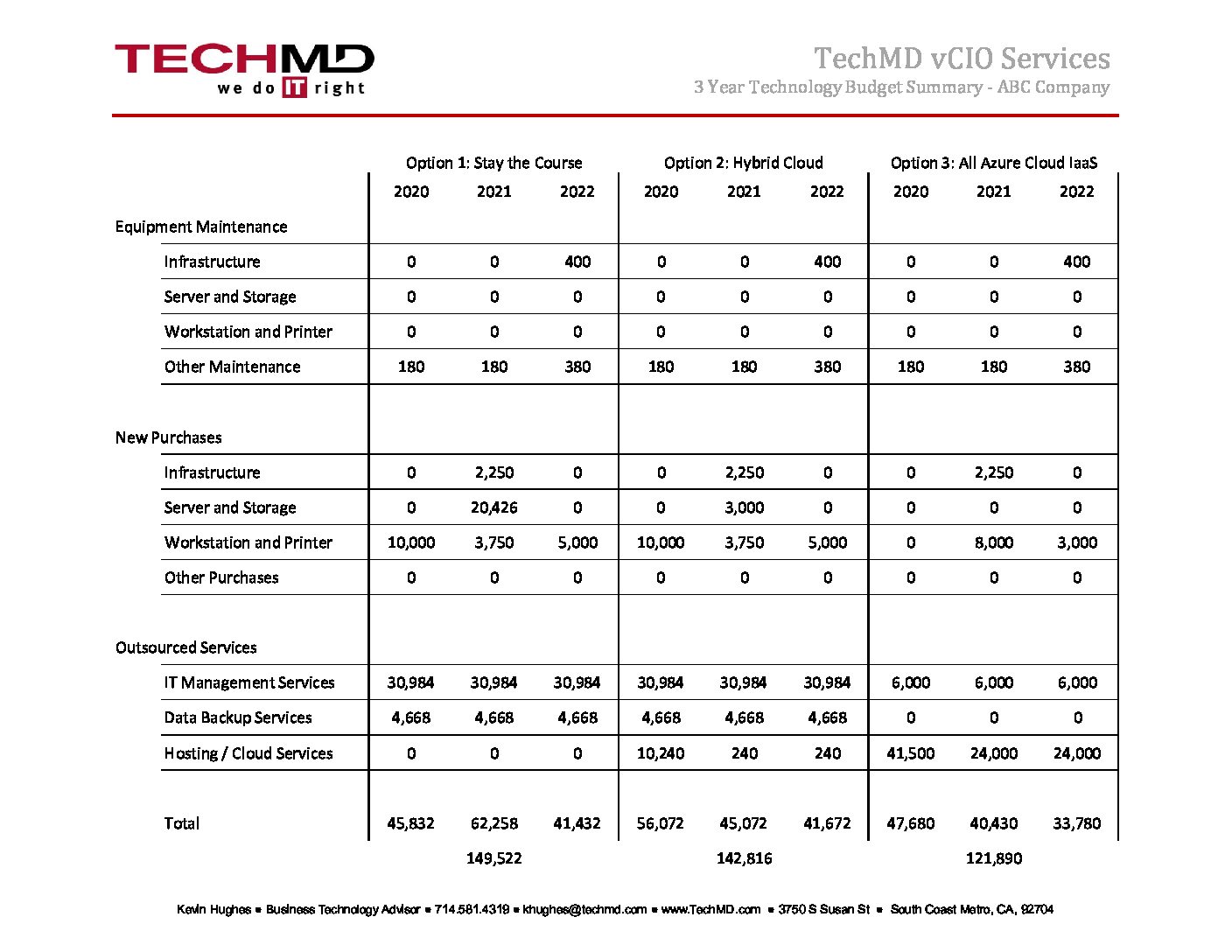
While we wait for the re-opening of the economy, most organizations across the country are still working through tough decisions about how to best conserve cash. Because IT spending is normally a significant line item in any organization’s budget, finding smart ways to reduce it can make a big difference in improving cash flow.
In big picture terms, labor costs make up the largest percentage of IT spend, so our best advice is to make sure you’re getting good value out of your IT provider. It’s also wise to get second opinions on large IT purchases—many businesses end up buying the Ferrari when they only needed the Toyota. However, there are a lot of things you can do in the short term to optimize your IT spending, and we’ve spent the last several weeks working through them with our clients.
Here are five things you can focus on right now:
1. Optimize Your Cloud Spending
If your organization has any IT infrastructure in the cloud, chances are you have idle resources that can be reduced or eliminated. One of the benefits of the cloud is that it allows you to pay for resources by the hour, so take advantage! If you’re only using cloud instances on weekdays, make sure you’re not paying for 24/7 usage. If you have cloud instances spun up for temporary projects, make sure they are decommissioned once the project is completed.
You should also look into Reserved Instances for AWS and Azure. These provide significant discounts in exchange for reserving a virtual machine for a set period of time. Many organizations see up to 72% savings by using Reserved Instances, so it can be worth it to finance them and pay up front to lock in your savings.
Finally, consider optimizing your backup storage. Any data that no longer needs to be stored should be deleted, allowing you to downsize your backup solution. If you have archival data that needs to be kept but not accessed regularly, you can move it into cheaper storage options. There are several good cloud options, like Amazon S3 Glacier and Azure Blob Storage, along with local hardware units like a Synology NAS. You can find more information about implementing cloud solutions here.
2. Audit Software Licenses
Keeping software licensing up-to-date is one of those IT tasks that often falls through the cracks, and it’s common to see businesses paying for extra user licenses they’re no longer using. Do a thorough audit of every piece of software that your business works with and confirm that you still need all the licenses you’re paying for.
At TechMD, we recently gamified this process and empowered our team to search for wasteful spending on licensing. Our team scoured our SaaS applications and, in just two weeks, we were able to reduce our software expenses by over $1200 per month.
Most organizations can score a quick win here by looking at their Office 365 licensing and active mailboxes. Whenever we onboard a new client at TechMD, one of the first things we do is audit the client’s Office 365 users and licensing costs. In most cases, the client is paying for licenses associated with former employees, and we are able to immediately reduce their Office 365 costs by 10-20% per month on average. The savings add up!


3. Reduce Connectivity Costs
Internet speed and capacity has only gotten better over the past several years, but many organizations are still paying for an internet package from 5+ years ago. Asking your ISP for updated service plan options or shopping around with different ISPs often yields internet packages that offer better internet quality for less money.
The same goes for your phone system and cable service. They may offer temporary discounts for placing services on hold, or you may be able to find better options available for your office. Finally, many telecommunications brokers are offering free audits, so you can quickly and easily find out if you’re paying too much for connectivity services. If you need a good reference, contact TechMD and we will introduce you to someone that can help.
4. Leverage Partner Programs
Many large technology vendors have partner programs that can cover up to $15,000 in costs when updating or migrating your IT infrastructure. For example, Microsoft offers a wide variety of cloud readiness programs to help fund cloud assessments, Azure migrations, and Microsoft Teams adoption. This can represent huge savings on IT projects that were already scheduled and can also offer the opportunity to invest in modernizing your IT for no cost.
Partner programs are constantly updating their offerings, so we recommend reaching out to your IT provider for more information about what’s available right now from your vendors. If you need some additional guidance on this, you can always reach out to TechMD.
5. Conserve Cash Flow with Hardware Leasing Programs
Due to the global uncertainty, many companies are delaying the rollout of planned IT projects. However, if you have critical infrastructure upgrades that can’t wait until the crisis subsides, you may want to consider leasing options, especially since the assistance you can get from partner programs and discounts from vendors can help make these an even more attractive option. So if you need to invest in your IT right now, you can often conserve cash through leasing options.
Leasing has come a long way since the old days of traditional equipment financings. Organizations can now include software licenses, labor costs, and even Reserved Instances (see #1 Optimize Your Cloud Spending) into digestible monthly payments. If you don’t know where to look, let us know and we can point you in the right direction.
IT spending can often feel like it’s out of control, impossible to understand, and woefully opaque. At TechMD, we don’t think it should be this way—IT costs can be transparent, budgeted for, and planned out in advance. For example, you can take a look at a sample 3 Year Technology Budget Summary that we use to guide our clients through their upcoming IT expenditures. If you have any questions about how you can reduce IT spending without sacrificing critical IT infrastructure, TechMD would love to help. Contact us today to start a conversation.




